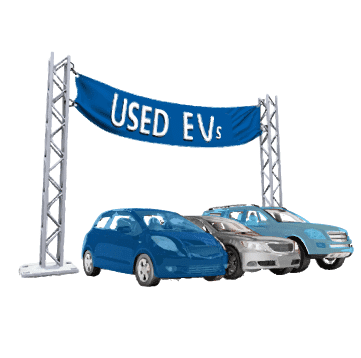TOP EV NEWS #1 – EVs AT GIMS 2018: ANNOUNCEMENTS AND CONCEPTS
With every passing international auto show I hold my breath in the hope for more auto brands to surprise with production-ready EVs, instead of presenting concept electric cars which cause me to wish my life away to 2020 or 2025. At least at auto shows in China, you can expect to see some of the EVs premiered on the roads within a year, albeit electrified versions of past generation models. Look at a recent report on the 2018 Guangzhou Auto Show to see what I mean. Sure, its cool to see the latest VW I.D. Concept or hear BMW‘s announcement that last years cool concept iVision Dynamics will be produced sometime in the future but the demand for EVs is now as we can see from sales data or the increased waiting periods when ordering an EV. It’s time for the large auto brands to bring more production ready EVs to market and deliver on the need now, not in 3 years time. But I guess we have to use what we have, at least it looks more promising than years before. So let’s look at the announcements and concepts from the Geneva International Motor Show currently on in Switzerland.

Mercedes Benz announced presented pre-production cars of its E and C Class plug-in electric models, including the C-Class Estate PHEV. The Mercedes Benz E350e and C350e are expected in the late summer of 2018. Mercedes upgraded the two models to the same drivetrain as the S560e unveiled late 2017. The improved drivetrain offers am a NECD range of 50km/32miles due to a 13.5kWh, up from the 6.4kWh in the previous generation. The drivetrain also includes a larger onboard charger of 7.2kW for faster battery charging and a more powerful 90kW/121hp electric motor. Click here for detailed specs of 2018 E350e and C350e.
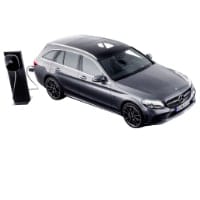
Mercedes Benz also unveiled its latest wall box enabling 22kW charging from the new elegant housing with cable management. The new wall box also allows the user to various functions from a smartphone including charging control, user management, and consumption overview. The wall box is available from this summer in Europe and 40 other markets. The wall box is available in as a basic 22kW charger, the internet-capable Wallbox Advanced and the Wallbox Twin for charging two vehicles at the same time at 11kW. The Advanced and Twin wall boxes is equipped with a built-in electricity meter and allow access control by RFID (Radio Frequency Identification). The RFID control makes it possible to manage several vehicles of different users, which is especially attractive for fleets – as well as for office communities or apartment buildings.

Mercedes presented the latest smart EQ fortwo “Edition Nightsky” (combined power consumption: 13.0-12,9 kWh/100 km; combined CO2emissions: 0 g/km) and the smart EQ forfour (combined power consumption: 13.2-13.1 kWh/100 km; combined CO2 emissions: 0 g/km) with a 22kW onboard charger. The improved charging allows for quick recharging of the smart city car, compensating somewhat for the relatively short range, making it an ideal for city dwellers.

RIMAC Automobili of Croatia unveiled its latest €1 million plus GT hypercar with butterfly doors, the RIMAC C_TWO. The C_Two incorporates active aerodynamics through active front splitters, maintaining optimum operating temperatures for electronic and battery systems, active flaps to modify the car’s aerodynamic profile, and a rear wing adopting varying positions. The 120kWh battery system provides 97 efficiencies and produces an astonishing 1.4MW of power. The C-Two Driving Coach can load racetracks into the car’s onboard system, offering guidance on racing lines and other inputs. From advanced ADAS features, facial recognition in lieu of a key, voice control and beautifully animated graphics, the car also features an M2M system monitors over 500 channels of telemetry – which can then be accessed and interrogated in real time via mobile app or laptop. All in all performance wise the C_Two offers more or less the same as the Tesla Roadster Gen 2 at a much higher price. Rimac will only produce 150 C_Two’s and plans to develop 20 in 2018. Click here for detailed specs and pictures of the Rimac C_Two.
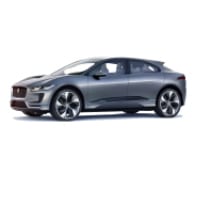
Jaguar presented the i-Pace EV SUV, unveiled earlier in March at the Geneva Auto Show. Pricing for the i-Pace was confirmed at the show. We covered the Jaguar I-Pace in last weeks newsletter, for pictures, pricing and specs please click here.
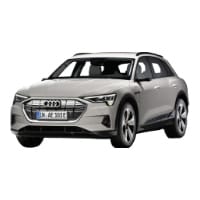
Audi unveiled the prototype for its first all-electric model at the Geneva Motor Show, the Audi E-Tron Q6 SUV. Audi announced that until the start of series production, almost 250 development vehicles would complete testing under extreme conditions worldwide over more than five million test kilometers (3,106,856 mi) on four continents. The production version of the Audi e-tron prototype has a 150 kW charging capacity, allowing recharging in 30 minutes. The production version of the Audi e-tron launches on the European market at the end of 2018.
Audi Chairman of the Board, Rupert Stadler, said, “Audi sets an important milestone for the company’s future with its first purely electrically powered model, in 2020 we will have three all-electric vehicles in our product range, with a four-door Gran Turismo – the production version of the Audi e-tron Sportback concept – and a model in the compact segment joining the sporty SUV. We will be launching more than 20 electric cars and plug-in hybrids by 2025 – spread across all segments and concepts.”

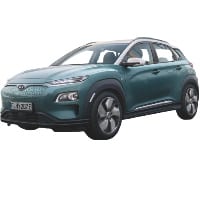
After its digital premiere of the Hyundai Kona Electric at the end of February, the GIMS 2018 played host to the premiere of worlds much anticipated first mass-produced compact SUV. The Hyundai Kona Electric is available in both a long range and short range version, covering distances from 300km to 470km. For pictures, pricing, and specs, please click here.

The Geneva International Auto Show saw the European debut of the All-New Hyundai NEXO – Hyundai Motor’s second-generation fuel cell vehicle. The NEXO fuel cell electric SUV takes approximately five minutes to refuel and boasts world-class system efficiency of 60%, durability equivalent to internal combustion engine-driven vehicles. For pictures, pricing, and specs, please click here.

Hyundai unveiled the next generation Sante Fe and announced that it will be available with Hybrid and Plug-In Hybrid drivetrain.
On the technical front, Hyundai showcased its Intelligent Personal Cockpit, applying multiple cutting-edge technologies such as IoT and voice recognition (AI). The cockpit will offer an entire suite of new voice-control capabilities including Car-to-Home IoT capability that extends the reach of the driver’s voice into the home environment. By integrating the in-car technology into the customer’s home, it is possible to control domestic appliances with voice commands from car to home. In addition, the Intelligent Personal Cockpit includes Hyundai Wellness Care, which detects the driver’s stress level with sensors in the seat and the steering wheel. The system starts playing soothing music and dims the cabin light when stressful situations occur.

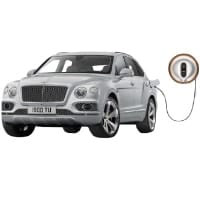
Bentley announced full details of the world’s first luxury hybrid model. The Bentayga Hybrid represents Bentley’s first step towards full electrification, combining the serenity of silent motoring with exquisite comfort and effortless performance. Some changes include the replacement of the traditional tachometer that displays engine speed with a dial showing when the car is operating in pure EV Drive, or engine speed if the combustion engine is operating. A battery status dial replaces the coolant temperature gauge. For pictures, pricing, and specs, please click here.
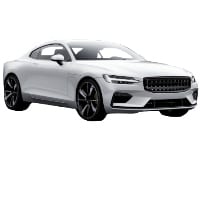
Volvo’s new electric performance brand, Polestar, introduced the Polestar 1 to the European public for the first time at the Geneva Motor Show. The European debut follows its global media reveal in Shanghai, China, in late 2017. Polestar will open pre-orders for the Polestar 1 at 08:00 CET on 13 March 2018 with a request to the list of potential customers to pay a fully-refundable deposit of €2,500. Pre-orders will open in the six initial launch markets announced in January, including China, the United States, Sweden, Germany, Norway and the Netherlands. An additional 12 new markets for Polestar 1 have been added and will open for pre-orders simultaneously, including Switzerland, the UK, Belgium, Finland, France, Poland, Austria, Spain, Italy, Denmark, Portugal and Canada.
Thomas Ingenlath, Chief Executive Officer of Polestar said, “To date, we have received interest from over 6,000 potential customers wanting the Polestar 1 – a number which began gathering momentum from the moment the car was revealed. With our current plans to produce 500 cars per year, it’s possible that we have exceeded our production potential in these early stages. This positive reception to Polestar 1 really encourages us that our ‘Pure, Progressive, Performance’ brand proposition resonates very well with customers.”
For pictures, pricing, and specs, please click here.

Peugeot unveiled the new Peugeot 508 and opened pre-orders for the combustion versions but made no mention of the PHEV model expected in 2019 as anticipated. The Peugeot 508 is equipped with the latest Advanced Driver Assistance System, which includes a brand-new night vision system detects living beings up to 200 meters away.For pictures, pricing, and specs, please click here.
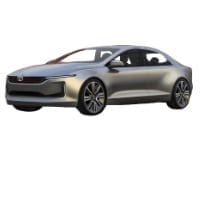
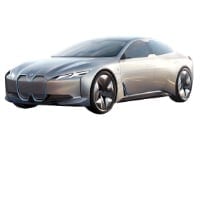
BMW showcased the 2019 BMW i8 Coupe and new BMW i8 Roadster at GIMS 2018. In a welcome announcement, BMW CEO Harald Krüger indicated that the production version of the BMW iVision Dynamics introduced in 2017 would be named the BMW i4 and is set for production in 2020. For pictures, pricing, and specs, please click here.
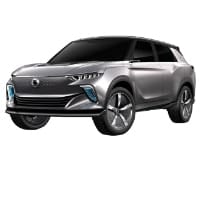
For what its worth, SsangYong presented its 5th electric concept vehicle at this year’s Geneva Auto Show without having produced one electric vehicle. The C-segment electric SUV concept named the e-SIV. The autonomous driving technology applied to the e-SIV uses a radar and camera sensor system. This stage 2 self-driving technology recognizes the lane the car is traveling in and can maintain a safe distance between it and other vehicles on the road. This can be further enhanced with an additional sensor to increase the automatic lane and active driving function to achieve self-driving stage 3. For pictures, pricing, and specs, please click here.
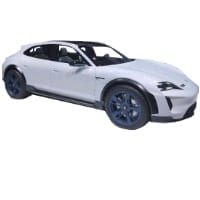
Porsche unveiled a Crossover Utility version of the Mission E at GIMS 2018. The specifications for the Mission E Turismo does not differ widely from the Mission E expected next year. No indication has been given by Porsche on when and if we can expect a production version of the Mission E Turismo, but all bets point to late 2019 for a 2020 model year. For pictures, pricing, and specs, please click here.

Aston Martin surprised with its new Lagonda Vision Concept EV Lagonda will be the British automakers zero emission luxury brand. Production on the Lagonda will start in 2021and a second model will be developed by 2023. Othe designs showed based on the Lagonda Vision is a Coupe and an SUV. Far more than any orthodox design, the Lagonda Vision Concept was designed from the inside out because that is what the architecture allows. With no need to package a vast internal combustion engine, gearbox, and transmission, Lagonda’s designers could optimize the interior down to the smallest detail and then build up the exterior of the car around it. The Lagonda Vision Concept doesn’t have a bonnet because one is not required. But it still needs to travel through the air and to do so as efficiently as possible to preserve battery life, which is why its shape is so sleek and dynamic. The Lagonda Vision Concept has been configured to accept powerful solid state electric batteries enabling it to cover up to 400 real-world miles between charges.

It is expected that the VW subsidiary SEAT will bring an electric model of its Cupra range to market in 2019/2020. The Spanish company this week unveiled what it calls the worlds first ready to compete 100% electric race car. “The CUPRA e-Racer is a true motorsport car, delivering 300 kW of continuous power and up to 500 kW of peak power”, said Dr. Matthias Rabe, Executive Vice-President for R&D. “The CUPRA e-Racer’s intention is to exceed the performance of the conventional version, to demonstrate CUPRA’s technological capabilities at all levels”. Specs released for the Cupra e-racer shows:
- 0-100km/h in 3.2 seconds and 0-200km/h in 8.2 seconds
- A top speed of 270km/h (168mph)
- Lithium battery consisting of 6.072 cylindrical cells fast charged in 40 minutes.
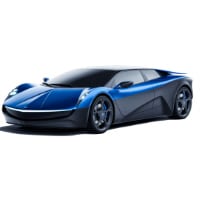
The Swiss-based design company by Robert Palm is developing the electric Elextra supercar. The Elextra was first introduced in 2016. Robert Palm announced at the GIMS 2018 that the Elextra should go on sale in 2019 and will be priced around €450,000. Only a limited run of 150 units is expected. For pictures, pricing, and specs, please click here.
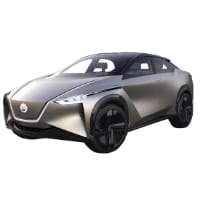
Nissan unveiled the IMx KURO electric crossover concept vehicle at GIMS 2018. The Nissan IMx KURO provides a glimpse into the future of Nissan Intelligent Mobility, the company’s vision for changing how cars are powered, driven and integrated into society. The innovative concept vehicle is designed to strengthen the link between car and driver as a close, reliable partner that delivers a safer, more convenient and more exciting drive. Upgrades to the Nissan IMx KURO also include the integration of Nissan’s pioneering Brain-to-Vehicle (B2V) technology. B2V interprets signals from the driver’s brain to assist with driving and to help the vehicle’s autonomous and manual systems learn from the driver.
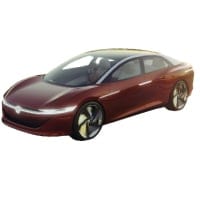
VW introduced the fourth of its I.D. concept vehicles, the I.D. Vizzion, which embodies the upper end of the I.D. model range. The revolutionary I.D.Vizzion showcases VW future vision of full-autonomy where the car can be controlled effortlessly via augmented reality, gestures and voice commands. The I.D. VIZZION will be available in 2022, initially launching with conventional controls. For pictures, pricing, and specs, please click here.
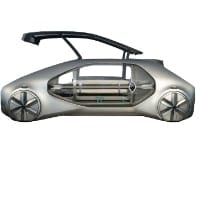
Renault revealed its vision for future mobility, the Renault EZ-GO. The EZ-GO is a robo-vehicle and ride-hailing concept, with an iconic design consisting of a front door for ease of access allowing a total of six passengers to walk into the car. “Ride-hailing and shared mobility services represent an important opportunity for Renault, especially in cities. Many have aging – or very young – populations, and people looking for new mobility solutions,” said Thierry Bolloré, Chief Operating Officer. “We’ve started exploring new mobility services already, and combined with our expertise in individual cars and light commercial vehicles, we believe Groupe Renault will be well-positioned to serve this potential market with electric, connected, autonomous mobility services in both consumer and business-to-business scenarios. EZ-GO is helping us further explore what the future could look like.”
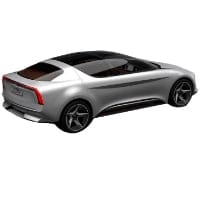
The Shanghai-based company Envision partnered with Italian designer Giorgetto Giugiaro to create the Sibylla Concept, a 70’s retro design EV. Giorgetto Giugiaro and his son created the design company GFG Style and has been commissioned by various customers to design vehicles since 2015. The biggest project before the Envision Sibylla was the TechRules Ren Supercar (below). In typical Chinese fashion, Envision is another example of a company with no auto experience planning to produce an electric vehicle. Envision is said to be China’s second-largest wind-turbine company and claims to own the world’s largest Energy Internet of Things (IoT) platform, EnOS, with 100 gigawatts of global energy assets. Envision also claims to be China’s second-largest wind-turbine company. No mention has been made when and if a production version of the Sibylla will be made.

The Chinese automotive R&D company Techrules unveiled the final production design of its Ren RS hybrid supercar at the 2018 Geneva Motor Show. The single-seat race car is a lightweight, high-performance track variant of the Techrules Ren supercar that was first previewed at last year’s Geneva show. The Ren RS features the China-based company’s ground-breaking Turbine-Recharging Electric Vehicle (TREV) system. The series hybrid powertrain delivers unprecedented levels of efficiency and performance, using advanced micro-turbine technology to deliver an ultra-low environmental impact. The modular chassis design permits a variety of powertrain configurations, to provide the range and performance capabilities required by the customer. The flagship version – with a high-power 28.4 kWh Lithium-Ion Polymer battery and with two motors at the front and four at the rear – delivers a maximum power of 960kW (1,287 hp / 1,305 PS) with a range of 1170 km from 80 liters of diesel fuel (NEDC). As a result, the most powerful Ren RS will rocket from 0-100 kph in just 3 seconds, onto a top speed of 330 kph, delivering a unique blend of ultimate performance, brutal power, and unparalleled efficiency.
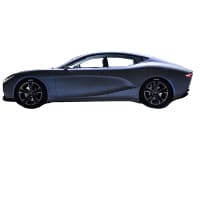
Chinese EV start-up LVCHI Auto unveiled the 4 seater Venere Gran Turismo EV at GMSI 2018. The powertrain of the Venere EV consists of four electric motors and a 100kWh battery. The differential housing also contains a two-speed transmission to optimize the distribution of torque and power. LVCHI plans to manufacture the vehicle in Turin, Italy and launch it to market in 2019. For pictures, pricing, and specs, please click here.
TOP EV NEWS #2 – GREATWALL EV STRATEGY UPDATE
Great Wall Motors have been quite busy off-late preparing to make a mark in the EV sector. The company has been in the news recently as BMW’s preferred producer of the Mini EV in China, now the company looks to sell around 700,000 EVs by 2025. The privately owned GWM headquartered in Baoding plans to invest 2 billion yuan ($3.2million) by 2020 in support f its EV strategy. According to Automotive News China GWM plans to launch 3 EVs this year followed by two more in 2019.
TOP EV NEWS #3 – AUDI AND FAW PLANS EV MANUFACTURING
During the launch of a jointly owned distribution company in China Audi and FAW announced that it intends to develop four EVs over the next five years.
Also, Audi and FAW will set up a company for new mobility and digital services. “China is taking a pioneer role in terms of digitization. In the future, we can respond to customer requests with even more agility in this area and offer new digitization concepts”, adds Wedler. Among other projects, the new mobility company will take over the premium mobility service Audi on demand+ which was launched in Beijing in September 2017.
TOP EV NEWS #4 – CHINA ISSUES FIRST SELF-DRIVING PERMIT
The state-owned news agency Xinhua announced that the Chinese Government would join other countries and allow companies to test self-driving cars on public roads. According to the report SAIC Motor Corp received two licenses and NIO another. The permit allows license holders to test drive the vehicles on a 5.6-kilometer (3.5-mile) public road in Jiading District of Shanghai. According to Huang Ou, deputy director of the Shanghai Commission of Economy and Information Technology, Shanghai will open more roads for testing over time. Up till now, companies tested vehicles but illegally so, one high profile case involved Baidu (China’s Google) which was caught testing in Beijing.
TOP EV NEWS #5- MAVEN GIG GOES LIVE IN AUSTIN
According to a press release by GM Maven Gig is to deploy a test fleet of 20 Chevrolet Bolt electric cars in Austin, Texas. Maven is car sharing service announced by GM in 2016.
The service will work as follows:
- Maven Gig vehicles are available for flat weekly rates that include the car, unlimited miles, insurance (minus deductibles) and maintenance.
- Pricing starts at $229 per week plus taxes.
- Maven will provide charging for Maven Gig drivers for a limited time through the Austin Energy Plug-In EVerywhere and EVgo networks.
- Drivers can see vehicle availability and pricing via the mobile app.
- Reservations and pickup date/time can be scheduled through the app.
- Maven Gig is platform agnostic and members can use the car to drive for rideshare services or for grocery, package and food delivery.
The Chevrolet Bolt is the most popular car in for Maven Gig drivers and has completed 6.5 million all-electric miles since February 2017 and have saved an estimated 250,000 gallons of gas.An estimated 643,800 rideshare passengers have been transported in Maven Gig vehicles, and drivers shouldn’t feel any range anxiety:
- On average, Maven Gig members in Bolt EVs drive more than half the vehicle range every day.
- Approximately 9 percent of daily trips exceed the EPA-estimated range of the car.
- Maven Gig drivers have taken trips from San Francisco to Portland and from San Diego to Los Angeles.
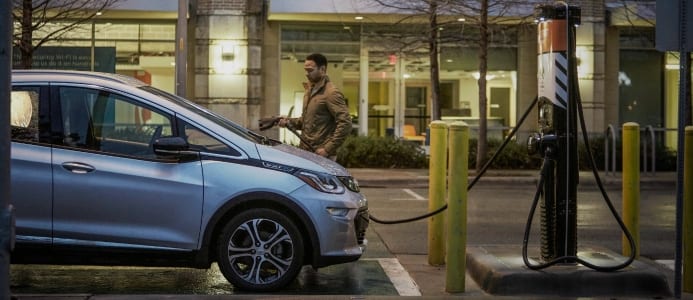
Maven’s first all-electric fleet of shared vehicles for freelance driving launched in Austin, Texas. Maven Gig vehicles are available for flat weekly rates that include the car, unlimited miles, insurance (minus deductibles) and maintenance.
LATEST EV DATABASES AVAILABLE IN OUR SHOP
No Results Found
The page you requested could not be found. Try refining your search, or use the navigation above to locate the post.


